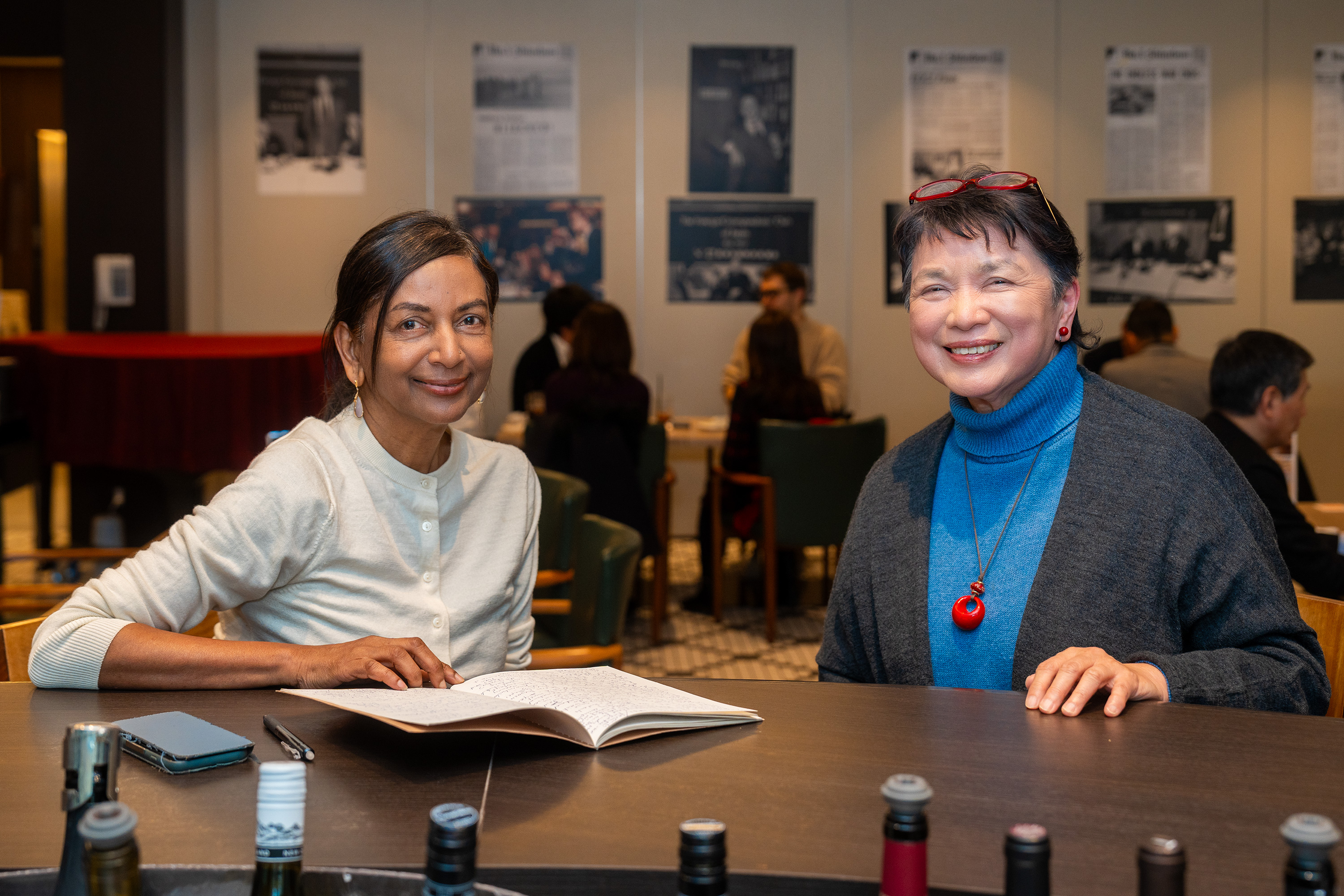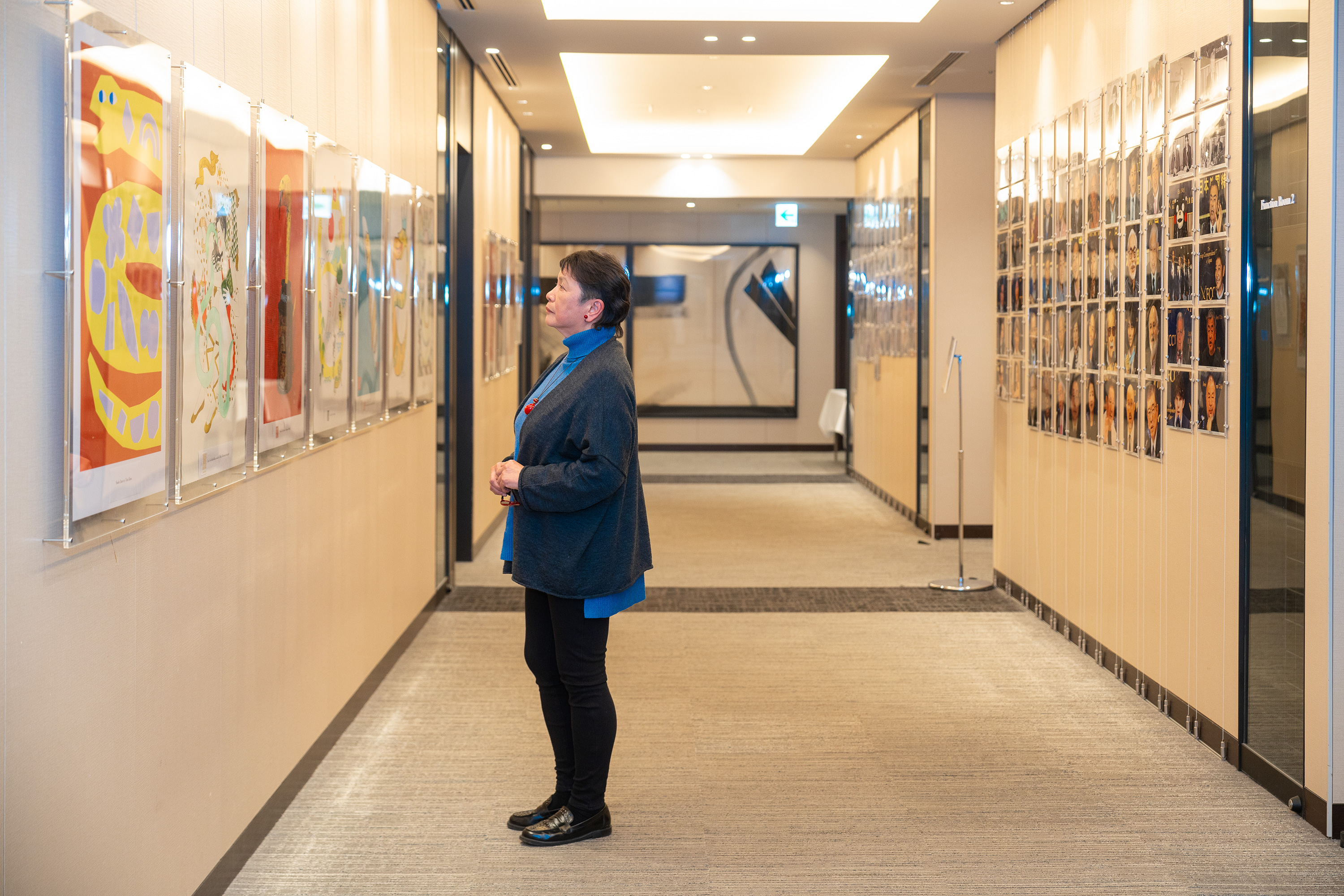Issue:
February 2025 | Ask the Associates
For Shuri Fukunaga, suiboku painting holds lessons for work and life

Shuri Fukunaga began ink wash painting as a hobby. But in the decades since, it has become an important part of life for the associate member and current FCCJ board director. The communications expert is semi-retired after a distinguished career that includes 15 years as CEO and managing director of the Japan subsidiary of Burson-Marsteller, the global public relations consulting agency. She was also head of communications under Carlos Ghosn when Nissan was undergoing its dramatic revival in the early 2000s.
“I began painting quite late in life after my husband, on sabbatical leave in Kyoto, suggested I join a suiboku-ga painting workshop that was led by Li Geng, a Chinese master,” she told the Number 1 Shimbun. The timing could not have been better. Fukunaga was then juggling a career in a male-dominated industry with married life.
“My days in Tokyo were all about my career. Then I would jump on the shinkansen late night and head for Kyoto for a weekend of respite,” she said, adding that her art soon became an intrinsic part of her life.
Fukunaga now runs her own communication consulting company, Persuade Incorporated, which she launched after she left Burson. Catering to a selected group of clients, she has time to strike a balance between work and painting. “Now that I have less responsibility I’ve also found the time to join the FCCJ board,” she said.

She says her interest in painting has opened doors to new opportunities and made semi-retirement more fulfilling. Her skills have blossomed, and she is involved in producing paintings for exhibitions. Naturally, the experience has made her an outspoken proponent of the value of having a second-life focus.
Painting has taught Fukunaga the importance of investing in time management – a realization she came to in Kyoto, where her pastime had become as significant as her career. “As I became more determined to understand this art, I also achieved internal satisfaction,” she said.
Painting has also helped Fukunaga reflect on the duality of her personality and her position as a Japanese woman in a “westernized” corporate world.
Her father nurtured her interest in suiboku-ga while she was attending an international school, where she studied in English. “When I paint in ink I wait after the brushstroke to watch the ink seep into the paper. I realize that the water that has been mixed into the ink sinks first followed by the thinly diluted ink next. What finally settles on the surface of the paper that is the art is actually the remnants of that subtle filtering process,” she said.

The process – a feature of this particular form of Asian art – brings to mind the organic nature of change within an organization, represented by the many layers and idiosyncrasies and built up over years, that characterize its culture.
“Change can be achieved in an organization when involving its partners and its ecosystem,” Fukunaga said. “That takes time and consistent communication.”
Fukunaga’s large ink wash paintings are bold – a mixture of strong and soft strokes that seem both to stare from and float on the paper. And, fortunately for FCCJ members and visitors, they will soon grace the Club’s gallery.
Suvendrini Kakuchi is Tokyo correspondent for University World News in the UK.

